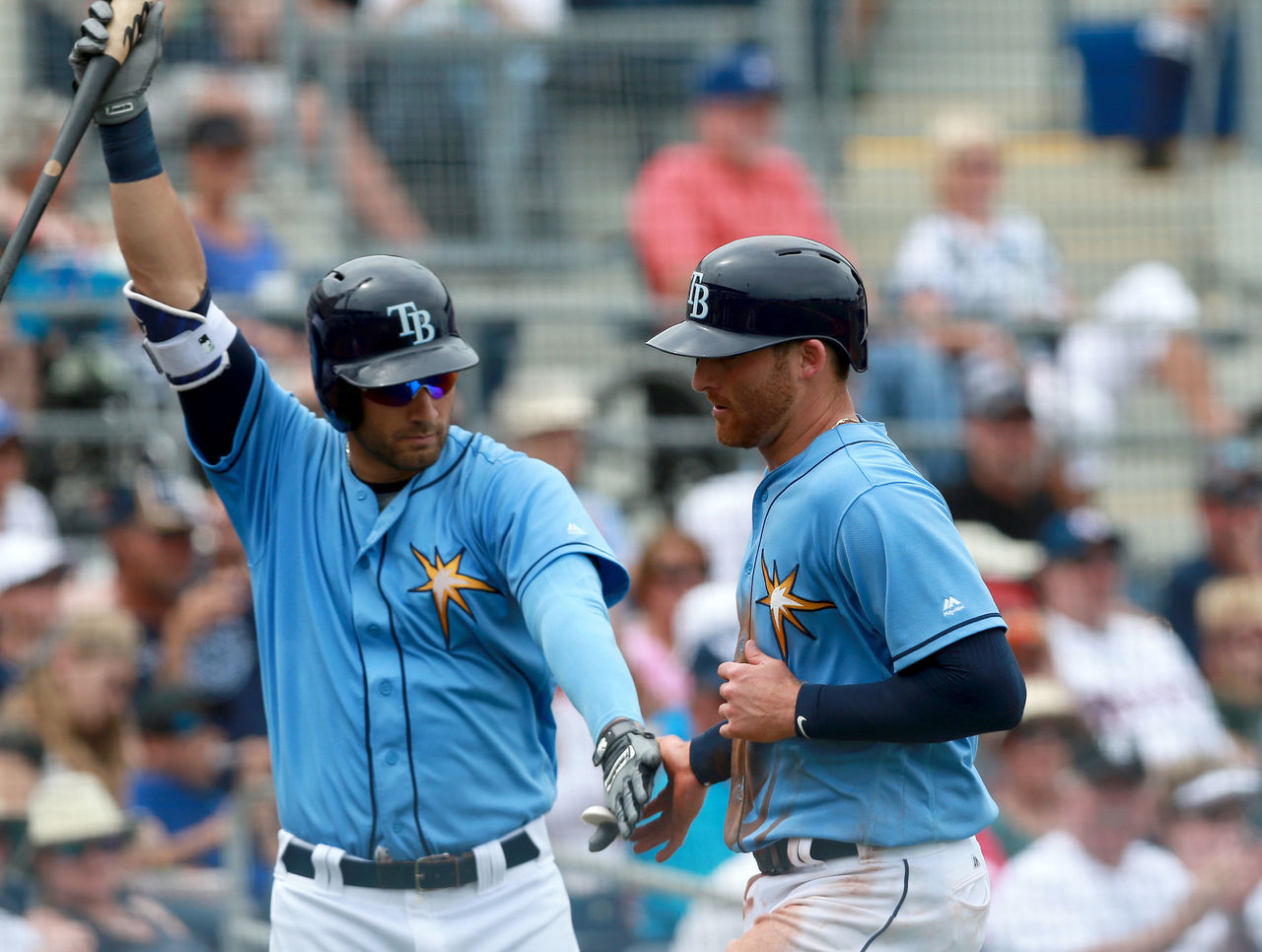MLB's new intentional walk rule causing unintentional confusion
NEW YORK – When the Toronto Blue Jays issued back-to-back intentional walks in the 11th inning Saturday night to load the bases for Evan Longoria, nobody was more surprised than the Rays' third baseman.
The surprise wasn't that Toronto elected to pitch to the three-time All-Star, although it was an odd decision to bring a fly ball hitter to the plate in a situation where a shot in the air would win the game. What flummoxed Longoria was that he went from being in the hole, behind Corey Dickerson and Kevin Kiermaier, to being at the plate, in the blink of an eye, thanks to Major League Baseball's new no-pitch intentional walks.
"It's my own fault, but I didn't even actually know that was a rule," said Longoria, who struck out against debuting reliever Casey Lawrence before Brad Miller drew a game-winning walk. "I didn't know it got implemented. I knew it was something they'd talked about, but I wasn't aware of it. So, it was a different situation, and I definitely was caught off guard.
"It was a learning experience. I don't know if it's been talked about, or what the protocol is for how much time you have, but if it does happen again, I'm definitely going to take my time, go through my whole routine, and prepare myself a little better for it. I do blame myself for not handling it better and not knowing the rule."
The rule change was made during spring training, though this year's exhibition games did not include no-pitch intentional walks. Entering Friday, there still were five teams that had yet to issue one, and five teams yet to receive one. Those teams may be the lucky ones, because the rule designed to shave a minimal amount of time off of baseball games is not universally popular.
"I'm kind of opposed to that rule anyway," Longoria said. "My argument is, it doesn't really speed the game up at all. It speeds the game up about 15 seconds or whatever. And it kind of, especially in that moment right there, it could be the difference between winning and losing the game. The guy could throw the ball to the backstop and we could win the game.
"There's a lot that could happen there, a lot on the line in that situation, to where I think that, if you're going to put two guys on, make him throw the eight intentional walk pitches. If you're playing at the major-league level, you should be able to throw four intentional walk pitches and let that be that."
Longoria, however, knows that isn't the case. He said that at least one Rays pitcher liked the new rule because those intentional walk pitches are unorthodox and stressful, and recalled a game last year when Enny Romero, now with the Washington Nationals, tried to intentionally walk Gary Sanchez but left a pitch too close to the plate and the New York Yankees catcher hit a sacrifice fly.

(Photo courtesy: Action Images)
"I think it takes an element out of the game," Kiermaier said. "It's like me saying, 'Well, I'm gonna sacrifice bunt, but why don't we just put the runner on first to second, because everyone knows I'm bunting?' You still have to do it. I think you should throw the pitches.
"The rule is what it is, but it's very weird, because I walk up there, and I see the umpire talking to Corey, and then I see Corey walk to first, so, OK, I'm up. But then I go up there and they say, 'Hey, you're going to first, too.' I don't know, it's just weird."
It may have been weirdest of all for Miller, who figured he had time to go back to the locker room and watch at least a little video of Lawrence. It turns out he very much did not.
"It happened really quick, and the next thing I know, I'm in the on-deck circle and getting ready to hit," Miller said. "I definitely felt rushed, so I know for sure (Longoria) felt rushed."
He did, all the more so because of his unfamiliarity with the new rule. But feeling rushed might just be the new way of the world in baseball, given the obsession of the commissioner's office with trimming excess seconds from game time wherever possible, even if that means forcing in new rules.
"The game, in my opinion, has gotten longer over the years because the players have gotten better," Longoria said. "The information - there's more information available, there's more calculations available in the course of the game, on both sides, and there's more moves being made. That's the simple reason as to why the game has gotten longer.
"I think the people that really love the game can appreciate all those nuances and intricacies that have helped the game become a little bit longer. Some of the changes that are being implemented and have already been, I don't know if they're shortening the game, or just changing the game and the way that people are viewing the game and seeing the game."